I’ve been asked many times how to clean and oil teak furniture. Time for a post dedicated to just that!

Maybe you own a teak chair that needs work or maybe you saw one on Craigslist or in a thrift store that looked too far gone to bother with. The good news is that a lot of teak is finished with just oil and oil is one of the easiest finishes to restore and maintain.
The photos above are of the of the same Wegner CH23 chair. All I did was to go over the chair with #0000 steel wool and a generous amount of teak oil. The steel wool cuts through the grime and the oil helps loosen dirt and also lubricates the steel wool so that it doesn’t leave any scratches on the wood. Usually a few passes with the steel wool are all you need, then let the oil soak in for 5-10 minutes. Then simply wipe it off with clean rags or paper towels.
(NOTE: if you use rags, you should not throw them in your washer and dryer afterward. The oil doesn’t wash out very well and can end up coating the inside of your units and kind of making a mess of things.)
Let the remaining film of oil dry for 1-2 hours, then buff vigorously with a clean rag to give it a nice glow. (If you forget to do this step and you end up with gummy-feeling wood the next day, you can either repeat the whole process OR just let it continue to dry for a week or two. The higher the humidity, the longer this will take.)
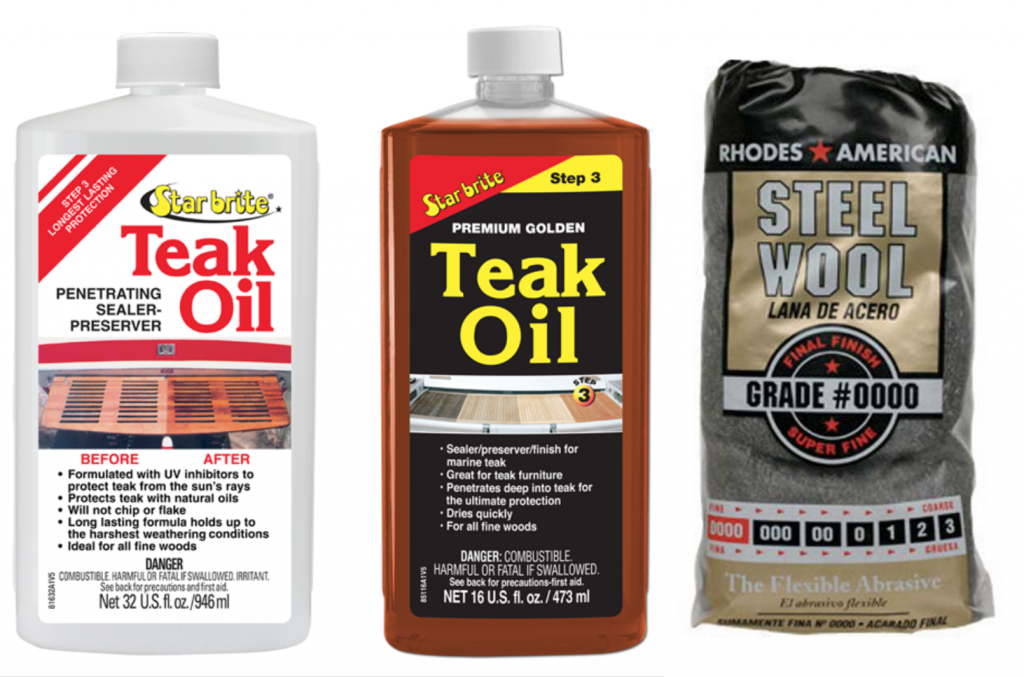
This is the brand of oil I use. It doesn’t have any varnish in it, which makes it especially easy to use. It also doesn’t have much of a solvent odor though if you’re sensitive to such things you might want to use it outdoors or with a respirator.
Get some rubber gloves, too. I use disposable ones and put two on my dominant hand.
The lack of added varnish means the finish is less protective. This is not an issue with chairs, which are mostly what I do; for a tabletop, especially a dining table, you might want to use something like Watco Danish Oil which does contain varnish. The application process for that is a little different.
Ace Hardware stores in the US carry Star-Brite oil and you can get #0000 steel wool in any hardware or paint store. I do not recommend anything coarser than #0000 as you might end up leaving marks in the wood.
I use the teak oil in the white bottle. I think the only difference is that the stuff in the black label has some color added to it, which so far I’ve never needed for anything.
Another tip: do NOT remove the paper seal on top of the bottle under the cap! Just poke a small hole in it, like toothpick-sized. Once you get going on a project, the outside of the bottle can get very slippery and I can pretty much guarantee that you’ll lose your grip on it or just knock it over accidentally at some point. A small hole will prevent a gusher of a spill.
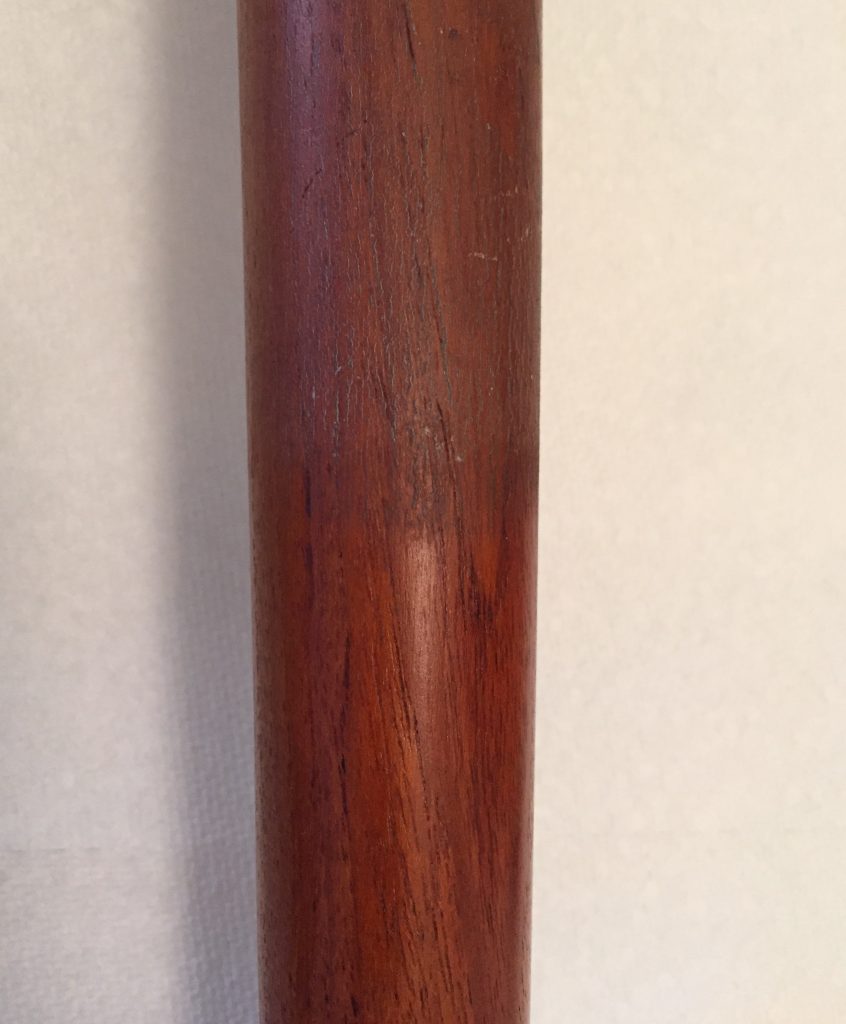
Even for wood that looks ok, oiling can make a noticeable difference. This chair leg wasn’t particularly dirty, just a bit dull. Oiling brightened it and gave it a lovely soft sheen.
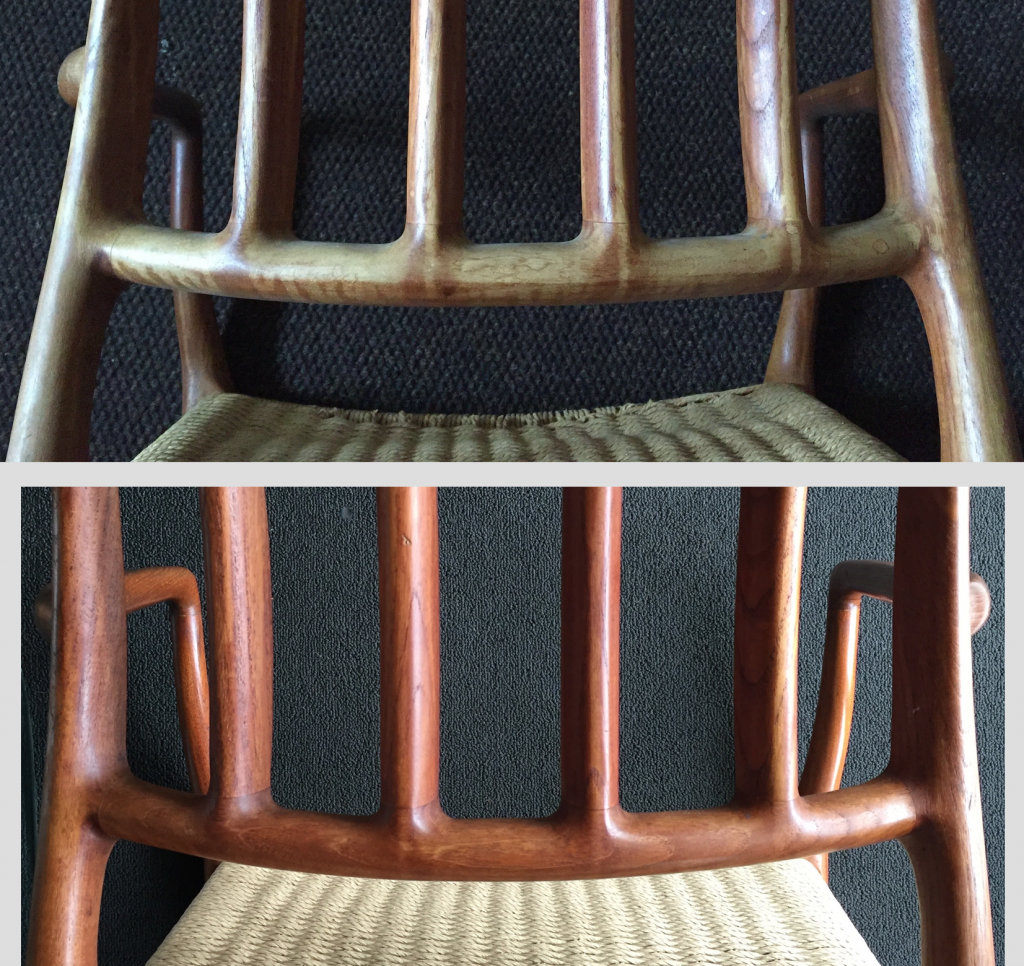
I don’t know what happened to this chair above–looked like something had poured over the back and leeched out the color and oil! I’d never seen fading like that and I kind of assumed it would need sanding or added color somehow, or at the very least multiple coats of oil.
Turns out all it needed was the usual one coat of oil, applied with maybe slightly more vigorous steel wooling. I was amazed.
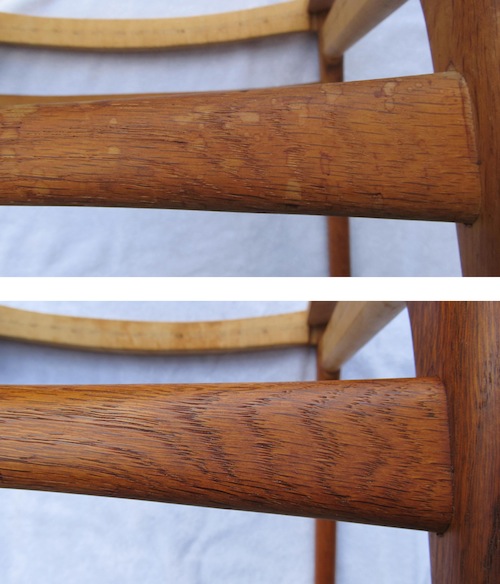
Water spots like in the top half of the photo above are very common and usually disappear with oiling, or at least can be made nearly unnoticeable. You may have to take more time with the steel wool but it’s still preferable to sanding. Sanding removes top cells of the wood and that’s where all the deeper color of age is.
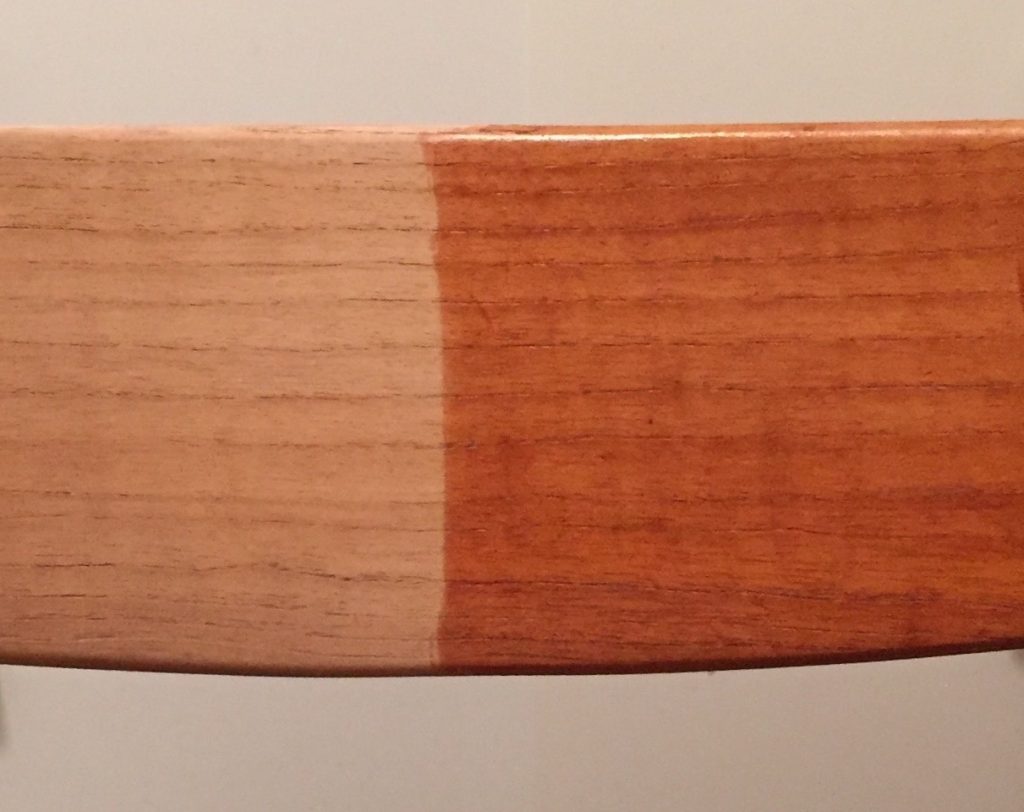
Once in awhile you’ll come across some teak that was lacquered, varnished or even shellacked at some point in its life. Some teak was lacquered by the manufacturer; I guess to give it a higher sheen…? The problem with lacquer is that it chips off rather than wearing down evenly as varnish does. If you oil something that has chipped lacquer, you’ll notice that it gets darker where the lacquer had chipped off but there’s no color deepening on the rest of it. I just strip the lacquer off if this is the case. I’ve also come across a few chairs that had been varnished by a homeowner years ago; same with some shellacked ones.
Refinishing is a whole other post. I just want to say here that for teak that is seriously dry, like in the photo above (after chemical stripping, which is very drying) you might think there’s no hope. I mean, we’re talking Sahara Desert dry. But you can see the amazing transformation with oil. You will probably need 2 coats and maybe even 3 over the space of a week, but it’s still a very doable fix.

5 Responses to cleaning and oiling teak